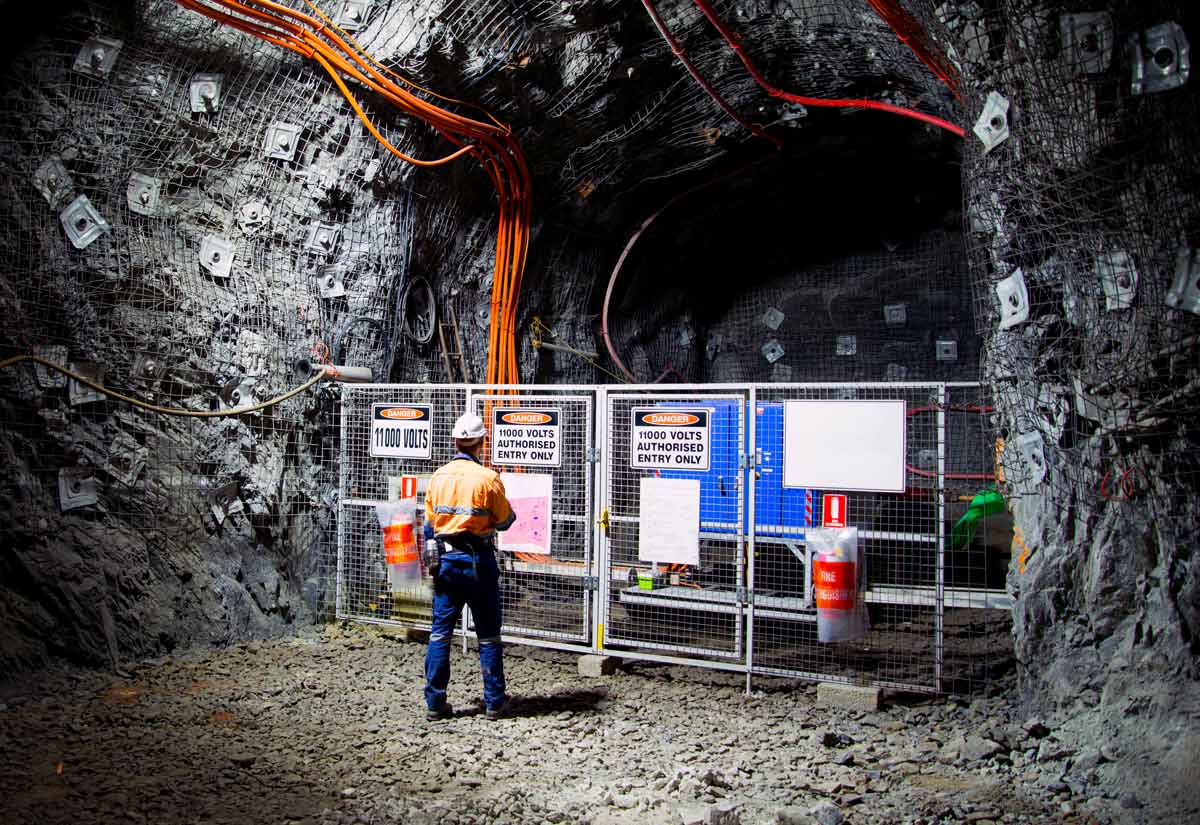A JOB CANDIDATE sits across from two INTERVIEWERS.
INTERVIEWER 1:
“Thank you for coming in today. We’re excited to learn more about you and your qualifications for the Mining Engineer position.”
CANDIDATE
“Thank you for having me. I’m excited to learn more about the role and the company.”
INTERVIEWER 2
“Let’s start with the basics. Can you tell us a little bit about your experience?”
CANDIDATE
“Sure. I have been working as a mining engineer for the past five years. I have experience in a variety of mining methods and technologies, and I have a strong track record of delivering high-quality results on time and within budget.”
INTERVIEWER 1
“That sounds great. We’re looking for someone who can hit the ground running and contribute to our team right away.”
CANDIDATE
“I’m confident that I can do that. I’m a quick learner and I’m always eager to take on new challenges.”
INTERVIEWER 2
“That’s good to hear. Now, let’s talk about salary expectations.”
CANDIDATE
“I’m looking for a salary within the advertised range of $120,000 to $150,000 per year, which is why I’m interested in this position.”
INTERVIEWER 1
“I see. Well, our salary range for this position is actually $90,000 to $110,000 per year.”
The candidate is surprised and disappointed. He’s already making more than that at his present job.
CANDIDATE
“I’m sorry, but that’s significantly lower than what I was expecting. The job listing said that the salary range was $120,000 to $150,000 per year. Frankly, I’d never have flown out for this interview for anything less.”
INTERVIEWER 2
“I understand your disappointment, but we have to be realistic about our budget. We’re a small company and we don’t have the resources to pay salaries in the range that you’re looking for.”
CANDIDATE
“I definitely can not accept a salary that low. I have to consider my financial obligations and my family. I’m already earning significantly more than you’re offering now.”
The candidate thinks to himself: I’ll need a $25,000 signing bonus to even consider this company, at this point. And I’m not sure I want to associate with such an unscrupulous bait-and-switch organization. That being the case make it a $50k signing bonus, since I may be signing on to the mining industry’s version of the Titanic here.
INTERVIEWER 1
“We’re sorry, but that’s the best offer we can make.”
The seasoned engineer sighs. This isn’t his first interview rodeo.
CANDIDATE
“Thank you for your time.”
The candidate thinks to himself: I understand completely, believe me. And so will every other mining engineer I know about 5 minutes after I leave this room.
The candidate stands up and shakes hands gruffly with the interviewers.
Recipients of these unfortunate tactics often take to social media to share just how far their organizations were from the target of treating people the way they want to be treated.
Reputation management aside, there are other valid reasons for ethical transparency in the human resources arena for company decision-makers to consider.
Factoring in the High Cost of Vacancies in Critical Positions
Dr. John Sullivan is an internationally renowned HR strategist and Wall Street Journal expert known in the Human Resources sector as “the father of HR metrics”. Ironically, Dr. Sullivan points to a misplaced emphasis on cost containment and a pervasive lack of awareness about the long-term detrimental consequences where COV (Cost of Vacancy) impact is concerned.
Sullivan’s COV calculations revealed that the cost of a single vacancy in a key position ranges between $7,000 and $12,000 per day. He cites one unique case where the vacancy expense ran as high as $200,000 per day.
With that in mind is a mere $25,000 per year increase in the salary range, as listed in the recruiting campaign for the operation’s most critical professionals all that significant?
15 problematic recruitment practices that companies should avoid:
In heavily regulated industries, such as mining and civil construction, it is essential to avoid hiring practices that could lead to compliance issues or legal problems. Problems such as the all-too-common “bait and switch” scenario above.
Below are 15 problematic recruitment practices that companies should avoid. We’ll provide guidance on developing a more ethical and effective hiring process. As we’ll see “bait and switch” applies to more than the initial salary offering, and these bad practices have negative effects on both recruiting and retention.
- Changing job requirements frequently: This can waste time and resources for both recruiters and candidates. It is essential to clearly define job requirements and expectations from the outset. When job requirements expand, salary and perks should reflect that, also expanding in proper proportion.
- Lack of clarity about job expectations: Hiring managers must clearly define the non-negotiable requirements and realistic expectations for the role. Failing to do so can lead to misunderstandings and dissatisfaction later on.
- Searching for “perfect” candidates: It is unrealistic to expect candidates to meet every single requirement perfectly. Hiring managers should focus on identifying candidates who meet the most critical qualifications and have the potential to grow and develop in the role.
- Offering salaries below market value: To attract top talent, companies must offer salaries that are competitive within the market. Failing to do so can result in a lack of qualified candidates and high turnover rates. The C-suite decision-makers need to consider the ongoing High Cost of Vacancies in essential positions when offering salaries to resolve the critical vacancies in their organization.
- Ignoring online applicants in favor of passive candidates: Actively seeking out passive candidates on LinkedIn or other platforms can be beneficial, but it should not be done at the expense of qualified candidates who have already applied through the company’s official channels.
- Ignoring diversity and inclusion: Expanding candidate searches and considering candidates with diverse backgrounds can lead to a more innovative and inclusive work environment.
- Fluctuating assessment methods: Using different assessment tools or criteria for different candidates can lead to unfair hiring decisions. Establishing consistent assessment methods is crucial for maintaining fairness and objectivity.
- Long gaps between interview stages: Delaying interviews or holding candidates for long periods can create frustration and negatively impact the candidate experience. It is important to move candidates through the hiring process efficiently. While your company dawdles, the best candidates are being signed by your competition.
- Excessive use of automation without human interaction: While technology, such as AI and automated chatbots can streamline certain tasks, it is essential to maintain a human touch in the hiring process. Candidates should feel valued and respected throughout their interactions with the company as opposed to being treated as a numbered file in an anonymous computer system.
- Involving too many stakeholders in decision-making: Involving multiple people in candidate screenings or decision-making can slow down the process and lead to inconsistent decisions. It is best to designate the appropriate stakeholders responsible for recruiting and retention and clearly define their roles.
- Neglecting team dynamics: Before hiring for a new role, consider the team’s structure and dynamics. It is important to evaluate how the new hire will align with the existing team and contribute to their goals. Neglecting the existing team’s dynamics can lead to the disruptions and expenses of a bad hire. In the mining industry, “the cost of hiring the wrong person can be catastrophic” to quote directly from this informative article at Mining People International. The cost multiples of a bad hire can’t be underestimated. In mining, employing the wrong General Manager for a site at a yearly salary of $300,000 could hit your bottom line for as much as $750,000.
- Focusing solely on hard technical skills: While industry skills are important, it is vital to also consider how a candidate’s personality and values align with the company culture. Using tools like personality assessments that take into account “soft skills” for managing people can help determine a satisfactory cultural fit in your organization.
- Formal and unengaging onboarding: Creating an engaging onboarding process that goes beyond just paperwork can help new hires feel connected to the company and its values.
- Ignoring reasons for ‘ghosting’: When candidates drop out of the hiring process without explanation, it is important to investigate the reasons why. This can help improve the candidate experience and prevent future ‘ghosting’ incidents.
- Lack of communication with rejected candidates: Even if a candidate is not selected for the role available today, it is important to communicate the decision respectfully and professionally. Maintaining positive relationships with unsuccessful candidates can create a positive impression of the company and leave the door open for future opportunities.
Conclusion
Avoiding these problematic hiring practices is essential for building a strong and ethical recruitment process in heavily regulated industries such as mining and civil construction. By following these guidelines, companies can improve their chances of attracting and retaining top talent while maintaining compliance and minimizing legal risks.
About Resource Erectors
Recruiting and retaining the top-tier heavy industry professionals your company needs to thrive in today’s competitive labor market is a challenge that Resource Erectors has excelled at for decades. That’s why over 85% of Resource Erectors professionals are still contributing to the success of their companies more than 5 years later and counting.
When you’re ready to make your move in mining, engineering, civil construction, manufacturing, industrial sales, safety, and more we have lucrative career-advancing opportunities for qualified candidates all across North America, so don’t hesitate to contact us today.












